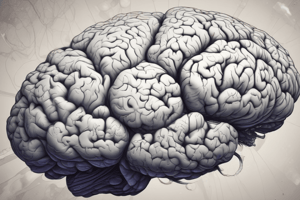Podcast
Questions and Answers
Which type of movement disturbance is associated with a lack or slowness of movement?
Which type of movement disturbance is associated with a lack or slowness of movement?
- Hypokinetic (correct)
- Ergokinetic
- Hyperkinetic
- Akinesia
In the context of Parkinson's disease, which type of motor disturbance is typically observed?
In the context of Parkinson's disease, which type of motor disturbance is typically observed?
- Tremor-dominant
- Hyperkinetic
- Hypokinetic (correct)
- Dyskinetic
What is a common clinical manifestation associated with hypokinetic movement disorders?
What is a common clinical manifestation associated with hypokinetic movement disorders?
- Bradykinesia (correct)
- Restless legs syndrome
- Rapid eye movements
- Excessive movement
Which term refers to a complete lack of movement?
Which term refers to a complete lack of movement?
Which of the following is NOT typically associated with hypokinetic movement disorders?
Which of the following is NOT typically associated with hypokinetic movement disorders?
What term describes a movement disorder characterized by continuous random jerky movements?
What term describes a movement disorder characterized by continuous random jerky movements?
Which of the following is a symptom commonly seen in hyperkinetic movement disorders but not in hypokinetic ones?
Which of the following is a symptom commonly seen in hyperkinetic movement disorders but not in hypokinetic ones?
What kind of abnormal condition is associated with Parkinson's disease?
What kind of abnormal condition is associated with Parkinson's disease?
Which term describes the absence of normal relaxation of muscle after contraction?
Which term describes the absence of normal relaxation of muscle after contraction?
Flashcards are hidden until you start studying




